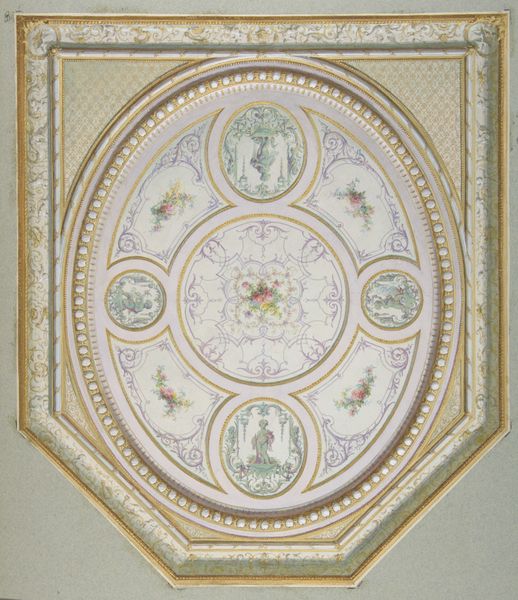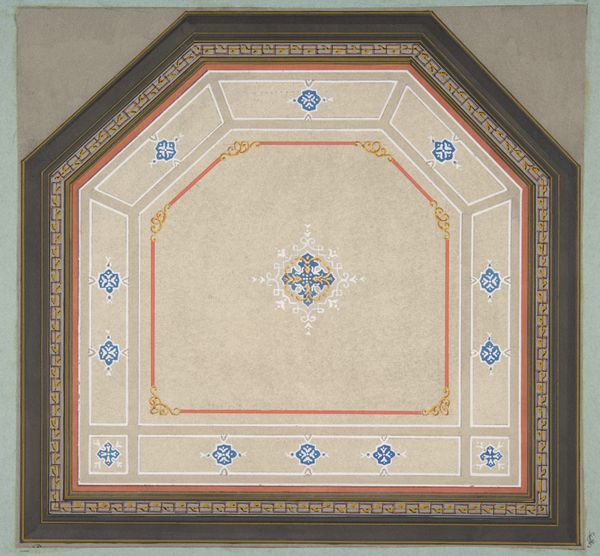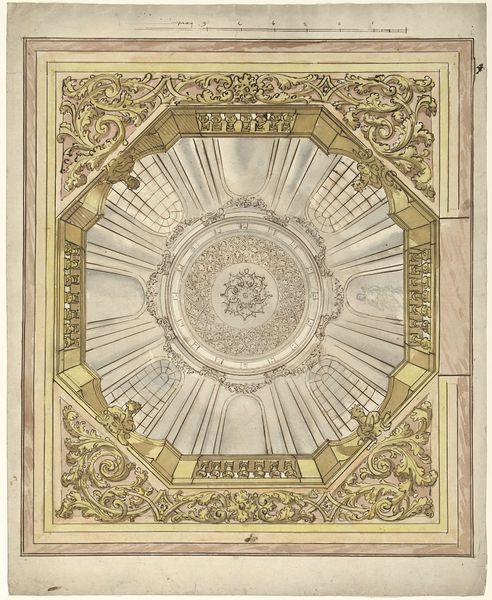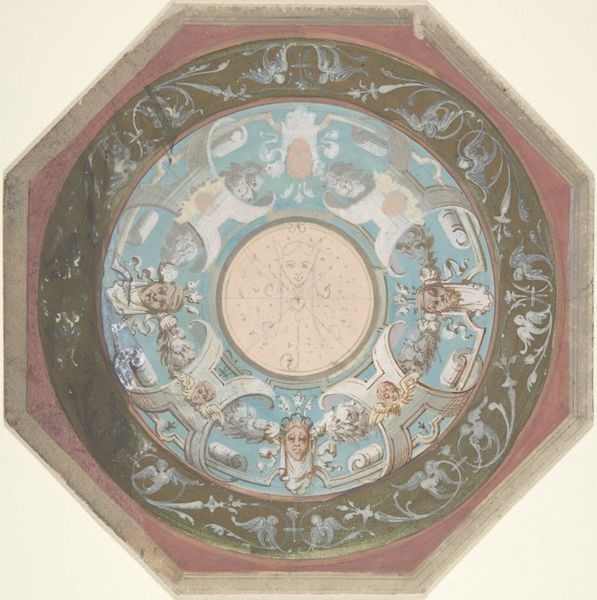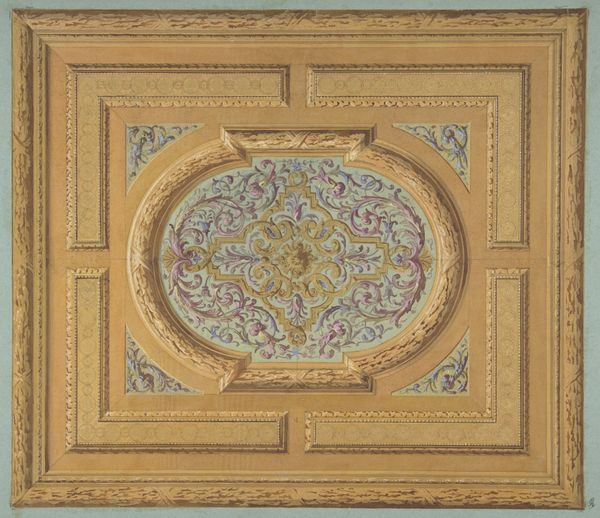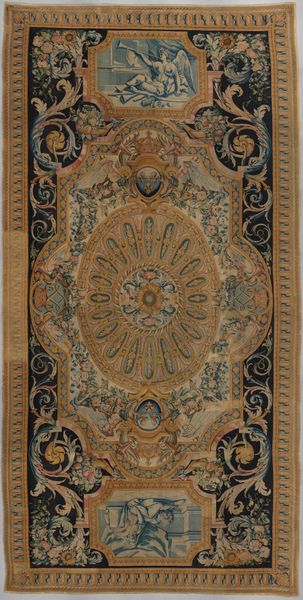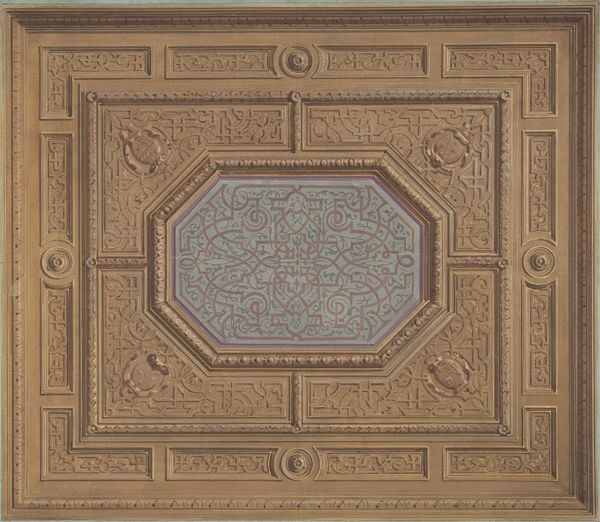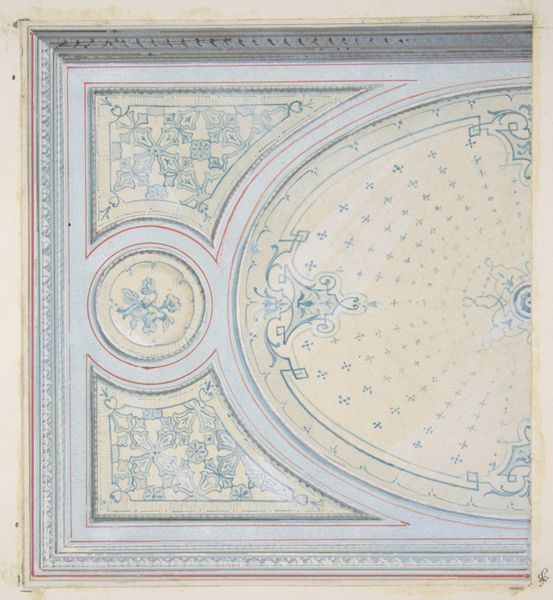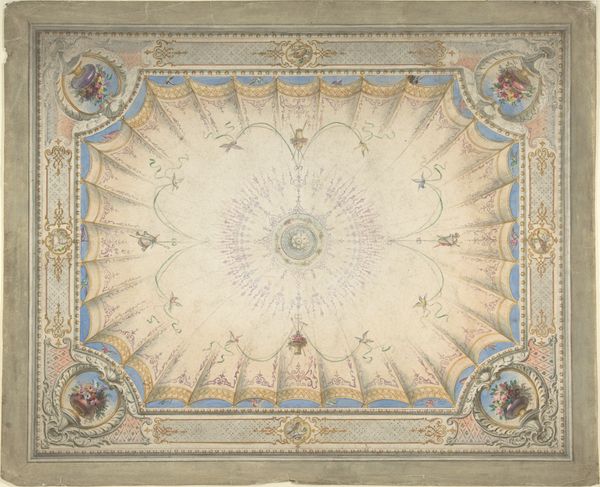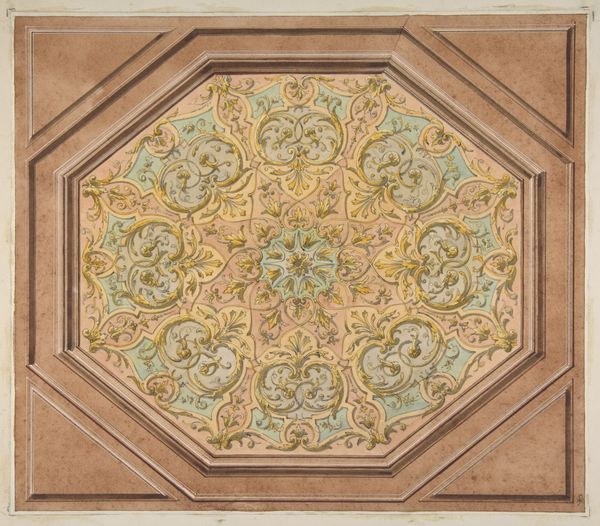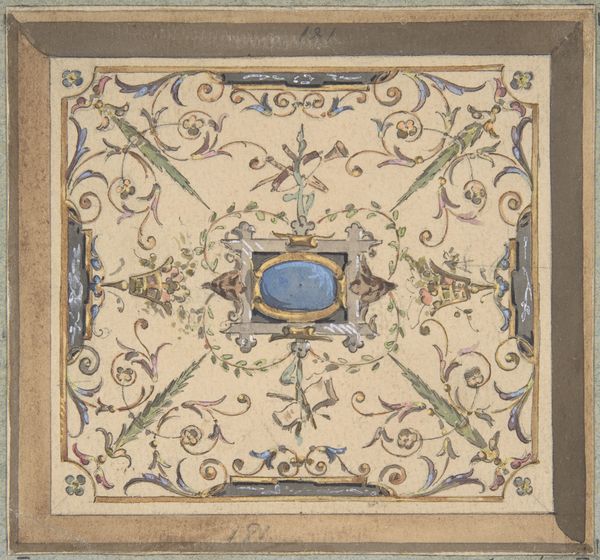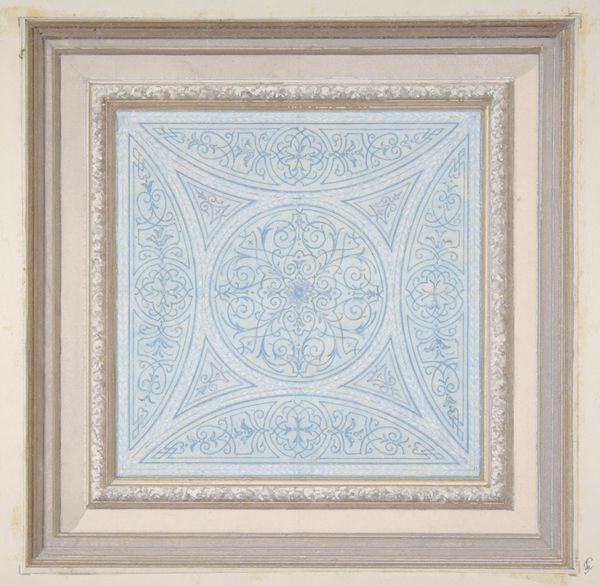
Design for the decoration of a ceiling with a trompe l'oeil painting of a coffered dome 1830 - 1897
0:00
0:00
Dimensions: Overall: 14 7/8 x 10 11/16 in. (37.8 x 27.1 cm) image: 9 7/16 x 9 1/16 in. (24 x 23 cm)
Copyright: Public Domain
Curator: Here we have "Design for the decoration of a ceiling with a trompe l'oeil painting of a coffered dome" created sometime between 1830 and 1897 by Jules-Edmond-Charles Lachaise, housed right here at the Metropolitan Museum of Art. The artwork blends drawing and printmaking to achieve its elaborate architectural illusion. Editor: At first glance, I am struck by the overall feeling of ascension, perhaps aspiration. The perspective, the detail, the framing itself all draws my eye upward. It really emphasizes the ornate details and the geometrical perfection in the very center. Curator: It is very interesting that you focus on ascension! This kind of architecture, often associated with wealth and power, places the viewer in a position of relative subordination. Consider who these architectural embellishments are *for*. Is this intended to inspire, or is it a display of authority, reminding people of their relative positions in society? Editor: I see your point. The classical motifs - the coffers, the stylized floral ornamentation, and the implied weight of those architectural elements pressing down - those carry specific cultural meaning related to status and lineage. It’s all a very self-conscious performance of dominance using well-understood visual cues. I keep thinking of eyes, everywhere. The circular design could be seen as an eye and I also can spot face-like images near the frame edges, on each corner. Curator: Right. Trompe l’oeil, particularly in such a domestic context, serves to naturalize these power dynamics by presenting them as beauty, seamlessly integrating this aesthetic of hierarchy into the everyday lived experience of the inhabitants. I think about how art can also function to shape our perceptions of social realities, and that kind of architectural interventions play an interesting part. Editor: Yes. And even the artist’s choice to render this design in print is itself a statement. By creating a design, the artist could multiply it and therefore transfer its impact and visual legacy. So, to me, it all comes together in a symbolic elevation of domestic space to a realm usually reserved for cathedrals and palaces, yet infused with a dreamlike atmosphere and many gazing figures. Curator: It offers an interesting commentary on class and domesticity of that time and its use of public and private spheres. Thinking about this work really allows us to examine not only its aesthetic qualities, but the ideologies it represents. Editor: Indeed, what we’re seeing is not simply a beautiful ceiling design but a coded language about the projection of influence and power that is still alive.
Comments
No comments
Be the first to comment and join the conversation on the ultimate creative platform.


